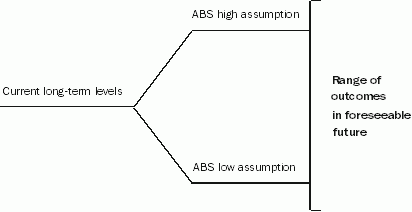Population proportion(a), Australian Capital Territory
[["0","1","2","3","4","5","6","7","8","9","10","11","12","13","14","15","16","17","18","19","20","21","22","23","24","25","26","27","28","29","30","31","32","33","34","35","36","37","38","39","40","41","42","43","44","45","46","47","48","49","50","51","52","53","54","55","56","57","58","59","60","61","62","63","64","65","66","67","68","69","70","71","72","73","74","75","76","77","78","79","80","81","82","83","84"],[[1.21],[1.1399999999999999],[1.1499999999999999],[1.1599999999999999],[1.1699999999999999],[1.24],[1.27],[1.29],[1.28],[1.27],[1.23],[1.23],[1.25],[1.1799999999999999],[1.1399999999999999],[1.1299999999999999],[1.1000000000000001],[1.05],[1.1000000000000001],[1.3300000000000001],[1.4099999999999999],[1.47],[1.54],[1.6100000000000001],[1.6399999999999999],[1.6499999999999999],[1.7],[1.79],[1.8100000000000001],[1.8400000000000001],[1.78],[1.77],[1.77],[1.6899999999999999],[1.6299999999999999],[1.6599999999999999],[1.6499999999999999],[1.6399999999999999],[1.6299999999999999],[1.5900000000000001],[1.5800000000000001],[1.52],[1.4199999999999999],[1.3799999999999999],[1.3],[1.29],[1.23],[1.28],[1.24],[1.27],[1.28],[1.29],[1.1799999999999999],[1.1299999999999999],[1.0800000000000001],[1.04],[1.04],[1.02],[1.01],[0.98999999999999999],[1],[0.96999999999999997],[0.93000000000000005],[0.89000000000000001],[0.85999999999999999],[0.83999999999999997],[0.81999999999999995],[0.76000000000000001],[0.77000000000000002],[0.77000000000000002],[0.73999999999999999],[0.73999999999999999],[0.72999999999999998],[0.69999999999999996],[0.70999999999999996],[0.70999999999999996],[0.58999999999999997],[0.52000000000000002],[0.47999999999999998],[0.41999999999999998],[0.41999999999999998],[0.35999999999999999],[0.34000000000000002],[0.31],[0.28000000000000003]],[[1.05],[1.05],[1.05],[1.05],[1.05],[1.0600000000000001],[1.0600000000000001],[1.0600000000000001],[1.05],[1.05],[1.04],[1.04],[1.03],[1.03],[1.02],[1.01],[1.01],[1.01],[1.0600000000000001],[1.1100000000000001],[1.1499999999999999],[1.1899999999999999],[1.24],[1.28],[1.3],[1.3100000000000001],[1.3200000000000001],[1.3300000000000001],[1.3500000000000001],[1.3600000000000001],[1.3700000000000001],[1.3700000000000001],[1.3799999999999999],[1.3799999999999999],[1.3799999999999999],[1.3799999999999999],[1.3700000000000001],[1.3700000000000001],[1.3700000000000001],[1.3600000000000001],[1.3600000000000001],[1.3500000000000001],[1.3400000000000001],[1.3300000000000001],[1.3200000000000001],[1.3],[1.28],[1.25],[1.23],[1.23],[1.21],[1.1899999999999999],[1.1899999999999999],[1.1799999999999999],[1.1699999999999999],[1.1799999999999999],[1.1599999999999999],[1.1499999999999999],[1.1399999999999999],[1.1299999999999999],[1.1200000000000001],[1.1100000000000001],[1.1000000000000001],[1.0900000000000001],[1.0800000000000001],[1.04],[1.01],[0.97999999999999998],[0.93999999999999995],[0.92000000000000004],[0.92000000000000004],[0.90000000000000002],[0.87],[0.84999999999999998],[0.83999999999999997],[0.83999999999999997],[0.83999999999999997],[0.81999999999999995],[0.80000000000000004],[0.78000000000000003],[0.76000000000000001],[0.73999999999999999],[0.69999999999999996],[0.67000000000000004],[0.63]],[[0.93999999999999995],[0.94999999999999996],[0.94999999999999996],[0.94999999999999996],[0.95999999999999996],[0.96999999999999997],[0.96999999999999997],[0.96999999999999997],[0.97999999999999998],[0.97999999999999998],[0.97999999999999998],[0.97999999999999998],[0.97999999999999998],[0.97999999999999998],[0.97999999999999998],[0.97999999999999998],[0.97999999999999998],[0.98999999999999999],[1.03],[1.0900000000000001],[1.1399999999999999],[1.1799999999999999],[1.22],[1.26],[1.28],[1.27],[1.28],[1.3],[1.3200000000000001],[1.3300000000000001],[1.3400000000000001],[1.3500000000000001],[1.3500000000000001],[1.3500000000000001],[1.3600000000000001],[1.3600000000000001],[1.3600000000000001],[1.3600000000000001],[1.3600000000000001],[1.3600000000000001],[1.3500000000000001],[1.3500000000000001],[1.3400000000000001],[1.3400000000000001],[1.3300000000000001],[1.3300000000000001],[1.3200000000000001],[1.3100000000000001],[1.3],[1.3100000000000001],[1.29],[1.27],[1.27],[1.26],[1.26],[1.26],[1.24],[1.23],[1.23],[1.21],[1.2],[1.1899999999999999],[1.1699999999999999],[1.1699999999999999],[1.1499999999999999],[1.1100000000000001],[1.0800000000000001],[1.04],[1.01],[0.97999999999999998],[0.98999999999999999],[0.96999999999999997],[0.93999999999999995],[0.91000000000000003],[0.91000000000000003],[0.90000000000000002],[0.90000000000000002],[0.87],[0.84999999999999998],[0.82999999999999996],[0.81000000000000005],[0.78000000000000003],[0.72999999999999998],[0.68999999999999995],[0.64000000000000001]],[[0.81000000000000005],[0.81000000000000005],[0.81999999999999995],[0.82999999999999996],[0.82999999999999996],[0.83999999999999997],[0.84999999999999998],[0.85999999999999999],[0.87],[0.87],[0.88],[0.88],[0.89000000000000001],[0.90000000000000002],[0.90000000000000002],[0.91000000000000003],[0.92000000000000004],[0.93000000000000005],[0.96999999999999997],[1.03],[1.0800000000000001],[1.1200000000000001],[1.1599999999999999],[1.1899999999999999],[1.2],[1.1899999999999999],[1.2],[1.22],[1.23],[1.25],[1.26],[1.27],[1.28],[1.28],[1.29],[1.29],[1.3],[1.3],[1.3],[1.3],[1.3],[1.3],[1.3],[1.3],[1.3],[1.3200000000000001],[1.3300000000000001],[1.3400000000000001],[1.3500000000000001],[1.3700000000000001],[1.3400000000000001],[1.3300000000000001],[1.3300000000000001],[1.3200000000000001],[1.3200000000000001],[1.3300000000000001],[1.3100000000000001],[1.3],[1.3],[1.28],[1.27],[1.26],[1.24],[1.24],[1.22],[1.1799999999999999],[1.1499999999999999],[1.1100000000000001],[1.0800000000000001],[1.0600000000000001],[1.0700000000000001],[1.0600000000000001],[1.03],[1.01],[1],[1],[1],[0.97999999999999998],[0.94999999999999996],[0.93000000000000005],[0.91000000000000003],[0.88],[0.82999999999999996],[0.78000000000000003],[0.72999999999999998]]]
[]
[{"axis_id":"0","tick_interval":"5","axis_min":"","axis_max":"","axis_title":"","precision":-1,"axis_units":"","tooltip_units":"","table_units":"","data_unit_prefix":"","data_unit_suffix":"","reverse_axis":false}][{"axis_id":"0","tick_interval":"0.25","axis_min":"0","axis_max":"2","axis_title":"%","precision":"2","table_units":"(%)","tooltip_units":"(%)","axis_units":"","data_unit_prefix":"","data_unit_suffix":"","reverse_axis":false}]